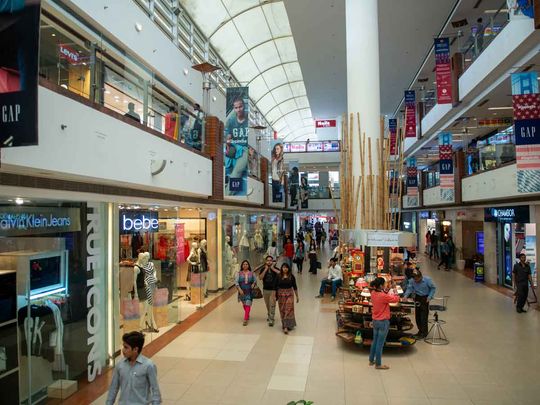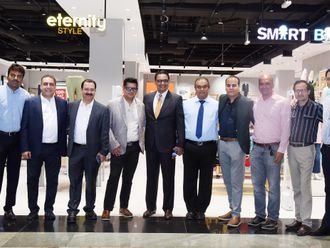
As consumer expenditure rises in India, the nation continues to offer significant opportunities for international and domestic brands while impacting global consumption patterns, including here in the UAE.
“What we are seeing in India is the rise of the middle-income class with more disposable income, which will drive further overall private consumer expenditure growth,” says Dr Viktorija Mano, Assistant Professor in Economics and Finance at Heriot-Watt University Dubai.
“As the proportion of households by income is changing, we should be seeing a higher percentage of the population allocating their disposable income to luxury products and services,” she says.
It’s something Vidisha Bathwal, Founder of Kolkata-based catering service Paprika, has seen firsthand since she set up her business in 2011.
Spending more than ever
“We have experienced significant growth in the Indian consumer market,” Bathwal, who expanded to the UAE recently, tells Gulf News. She has seen her revenue from catering events surge 50 per cent over the past five years, resulting in a turnover increase from Rs10 million (Dh437,445.5) to approximately Rs15 million. Paprika caters for weddings, businesses and airlines and also operates a cloud kitchen.
The effect of India’s expanding consumer market is also apparent in the wedding services market, she said. “Events like the Ambani wedding in Mumbai highlight the potential for significant revenue and visibility for vendors, fostering business growth and increased investment,” she says.
Reliance heir Anant Ambani reportedly spent $600 million to celebrate his recent wedding to Radhika Merchant. The event made international headlines for weeks.
Wallets are wide open for weddings
Veteran couturiers Abu Jani and Sandeep Khosla, who designed many of the Ambani family’s outfits for the wedding, have diversified into wedding design as part of a larger expansion that caters to India’s swelling consumer market.
“Wedding event design is an important and growing vertical for us where we cater to the demand for creating magnificent weddings for clients in addition to designing couture and jewels for brides, grooms and their families,” the designers point out.
“The Indian consumer has a voracious and growing appetite for fashion and lifestyle products and service. Since the time of the maharajas, Indians have been natural consumers of luxury. The maharajas have been replaced by high-net-worth industrialists, businessmen and women, and the super rich. An increase in spending power translates automatically and smoothly into a risk in demand and expenditure on our clothes,” they add.
The brand is now expanding into several new verticals to cater to this demand, including jewellery, accessories, footwear and home products.
Growing per capita income
India is the fifth-largest economy, with gross domestic product (GDP) estimated at $3.93 trillion in 2023, according to the IMF. By purchasing power parity, it is the world’s third-largest economy.
Per capita income grew from $1,559 in 2014 to $2,482 in 2023, World Bank data shows – up 37 per cent.
The country is on track to become the world’s third-largest consumer market by 2026, UBS said in May. The bank estimated India’s affluent – those earning over $10,000 per year – could number 88 million by 2028, up from 40 million in 2023.
Consumption growth is expected to remain at 4-5 per cent in the current and next fiscal, below the 6.5-7 per cent average annual growth seen during FY11 and FY20.
Last month, BMI Research, a Fitch Solutions unit, estimated real household spending growth in India at 6.7 per cent in 2024, up from 5.7 per cent in 2023.
Rising middle class
With more disposable income to hand, Indian consumers will also impact the global economy.
“Given that Indians are frequent visitors to the UAE, this change should have a positive impact on the UAE economy,” Dr Mano says.
Soham Shah testifies to the growing spending power of Indian travellers to Dubai. He is CEO and Founder of SelfDrive Mobility, a digital car subscription and rental platform operating across the UAE and four other GCC countries, as well as the UK and Ireland.
“India’s rapid economic growth has seen SelfDrive’s revenue in the UAE increase by approximately 25 per cent over the past year,” he says. “Many Indians in the GCC and travellers from India already use our Self-Drive app, ensuring a seamless experience with their existing profiles and KYC set up.”
The company now wants to expand to 18 cities in India, aiming at domestic consumers and GCC travellers with rentals for daily, weekly or monthly use.
“Indian consumers [are] increasingly looking for premium and convenience options favouring subscription-based and pay-per-use models over traditional car ownership. With a high rate of smartphone penetration, Indian consumers are heavily reliant on mobile apps for services, which is a key feature offered by SelfDrive Mobility,” he says.
That’s accors with researcher GfK’s India Urban Offline Report, which reports increased disposable income, especially among young people, and a shift towards premium, branded products in the country’s technical consumer goods (TCG) market.
National disposable income has grown 17 per cent from January to May 2024, Anant Jain, Head of Customer Success for India at GfK, an NIQ Company, says in a statement to Gulf News.
“Demographic trends such as the rising middle class, which has more disposable income, the growing youth population under 35, and urbanisation, where people move to cities for better opportunities, are shaping the future of India’s consumer market,” he adds.
The rise of India’s consumer market is poised to shift global consumption patterns, attract international companies to innovate and cater to Indian preferences, and drive advancements in affordability and technology, Jain explains. “India’s progress in digitisation through initiatives like Digital India will shape global retail dynamics, with investors worldwide keen on investing in digital infrastructure. Additionally, the increasing trend towards sustainability in India could lead to a global shift towards environmentally-friendly products, significantly altering global supply chains.”
Debt and savings risks
Spending growth comes with its share of risks, Dr Mano cautions. “The growth in expenditure can lead to rising household debt and falling savings, which could impact the long-term growth sustainability. So, household debt needs to be controlled to prevent causing financial vulnerability and debt overhang.”
She notes, however, that India’s household-debt-service ratio is among the lowest of major economies. Although the ratio grew to 6.7 in February from 5.2 per cent a year ago, it’s lower than the US (7.6 per cent), Japan (7.5 per cent) and the UK (8.5 per cent), according to a Deloitte assessment. This means that as a result, household debt stress is less likely in India, Dr Mano observes.
Boosting consumer spending
The recent budget – delayed by the country’s general elections earlier this year – looks to strengthen India’s growth story. Although it largely maintained a focus on capital expenditure, jobs schemes and tax changes look set to boost consumer spending.












